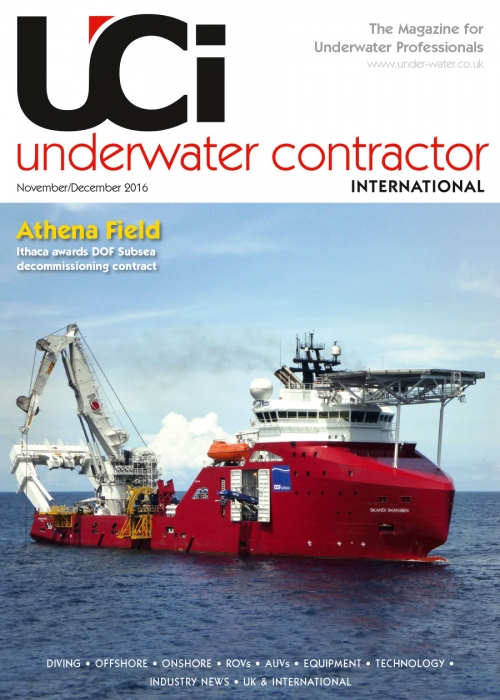
The Magazine for Underwater Professionals
![]() Jan/Feb 2015
Jan/Feb 2015
ASSOCIATION NEWS
Association of Diving Contractors
Diving into the new ACoP
Well, pretty much as planned, the 2014 Second Edition of the Inland/Inshore Approved Code of Practice (L104) was issued on 9 December 2014 and immediately became the current requirement to achieve compliance with the Diving at Work Regulations 1997.
In reality the content was not a surprise as the planned amendments file had been extensively circulated for consultation during the latter part of 2014, following extensive consultation with industry and anyone who was willing to contribute, but all the same there is no substitute for being able to read and understand the revised text, and then seeking to understand the full impact of the changes.
START
Even before you start to digest the text changes, the cover is quite pleasing. Gone is that image of an inland/inshore team at work that displayed some questionable standards; now what we have is a more timeless image that more effectively portrays the prime activity contained with the ACoP. At the moment the document is available as a PDF download via the Health and Safety Executive diving website, but I understand that a print run of L104 will be commissioned sometime in the early part of 2015, and as the diving ACoPs are generally one of the best selling documents in the HSE publishing catalogue, you can expect demand for the printed version to be reasonably robust.
The general layout of the ACoP is consistent with the initial 1997 issue, however do not be fooled, the numbering has changed, you cannot make a straight comparison between the two issues, and do be aware that the references on the amendments file generally notes the original paragraph numbers.
But now, as a taster, we will take a very brief look to explore some of the changes that are contained within the ‘new’ ACoP. In my opinion, the biggest point of note is that, at last, there is clear reference to a minimum five-man team for surface supplied diving operations. It might come as a shock to some, but to most conscientious contractors working inland/inshore, it is welcome and long overdue news.
For some time HSE inspectors have expected a working surface supplied team to have a dedicated minimum of five, since that is the minimum number that would be required in the case of having to deal with an emergency event, and however you look at it, the recovery of an unconscious diver has always been a foreseeable event on most diving projects.
CLARITY
The limited use of scuba is still permitted, I quote “… for simple tasks such as visible inspection in clear water where no risk of entrapment …” (para 79). So at last, there is some clarity about the selection and use of scuba in a commercial diving environment. If the work requires more than inspection or necessitates the use of tools or equipment, scuba would be considered unsuitable. In addition to this clear definition, there remains a requirement to substantiate the selection of the equipment by the provision of an appropriate risk assessment.
The other significant change involves the removal of the two-hour requirement for the provision of access to a suitable two-compartment chamber for each diving operation, this change being the result of guidance from medical specialists who clarified that you need access to a chamber on site, or that you need to get the casualty to the most suitable chamber facility within six hours.
OPEN
Clearly that leaves the middle of the previous three availability of compression chamber requirements a little open. So the new ACoP places a reliance on having access to good medical support and ensuring that there is a robust and achievable plan for the treatment of a DCI case, this resulting from a proper assessment of the risk.
By now most interested parties will have their own copy of the new ACoP and will no doubt have browsed through it several times. The bulk of changes may not be significant but they do reflect a lot of things that needed to be tidied up to ensure that interpretation of the ACoP does result in safe and appropriate operation activities.
The months ahead will no doubt shake down the full implications of the changes, lets hope they succeed in continuing the improvement on standards that has been experienced in recent years.


